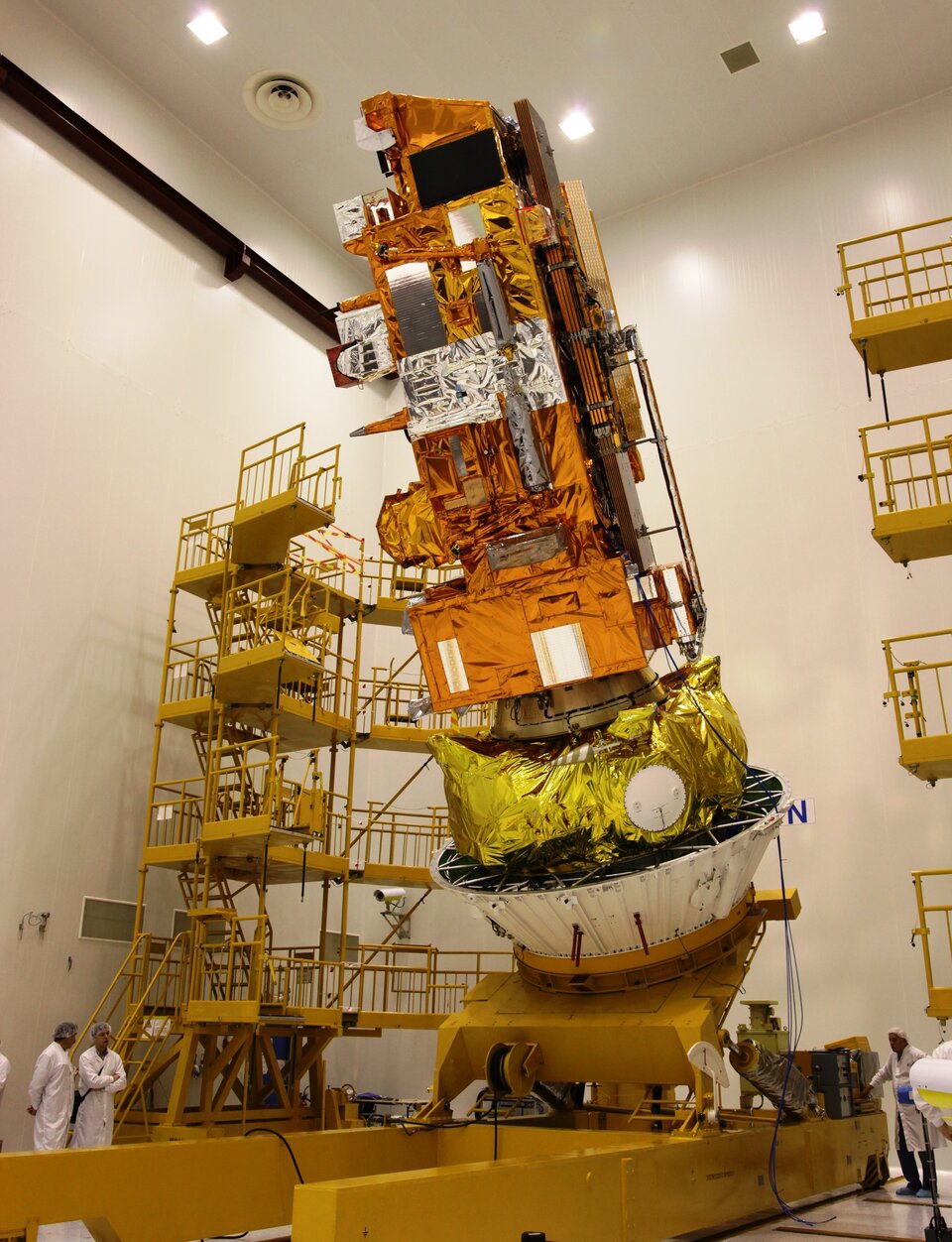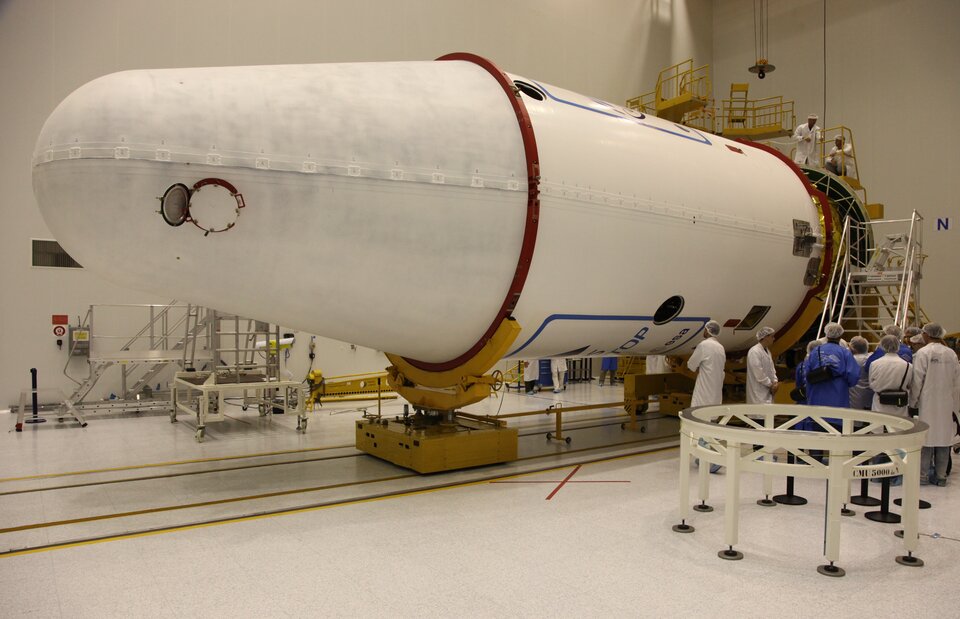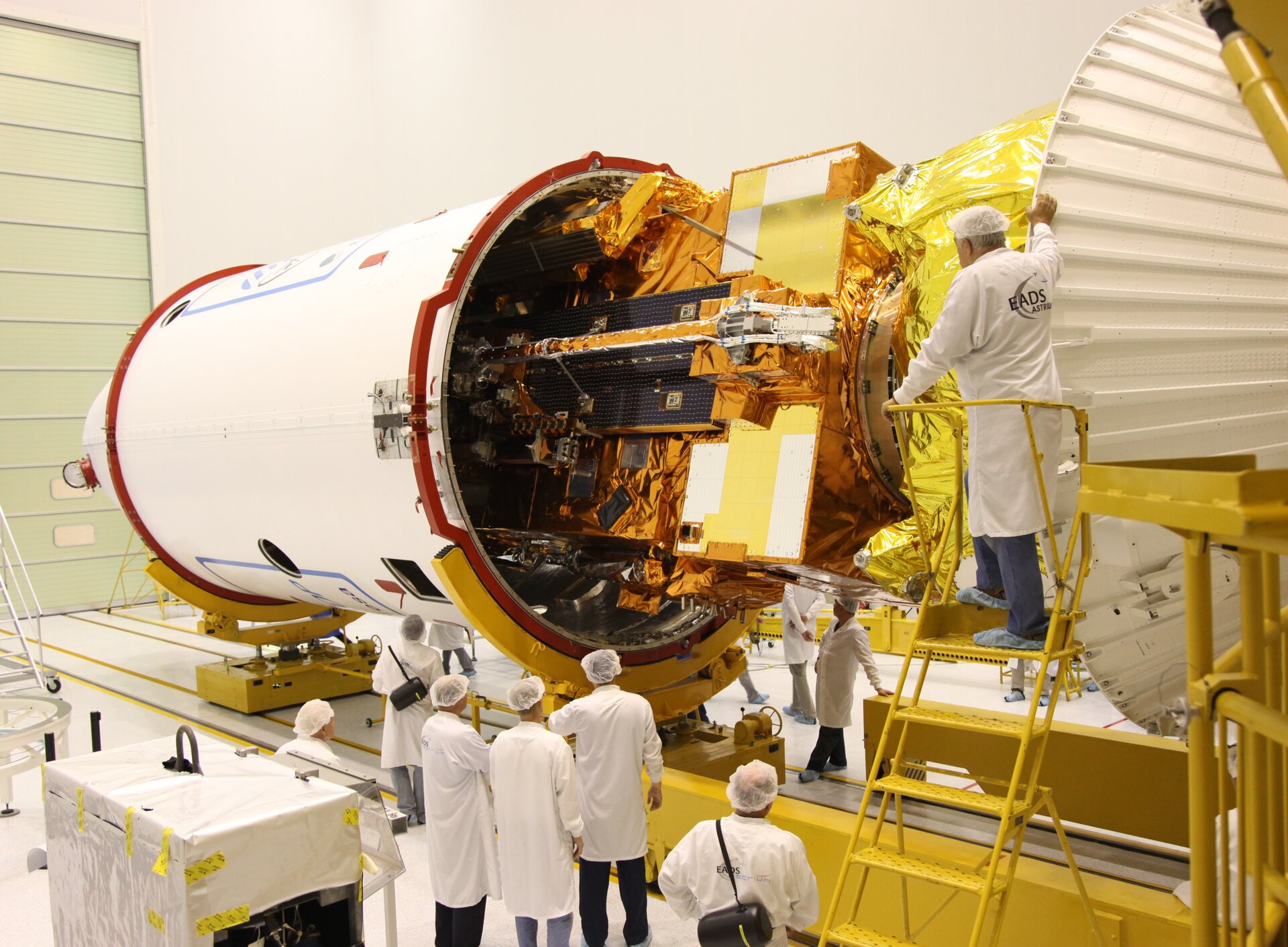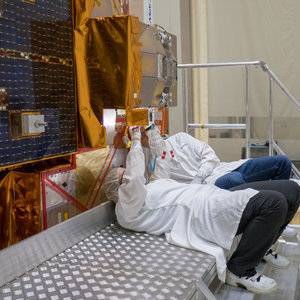Last look at weather satellite
As preparations for the launch of Europe’s latest weather satellite continue on track, the team in Kazakhstan has said farewell to MetOp-B as it was sealed in the Soyuz rocket fairing. Liftoff is set for 16:28 GMT (18:28 CEST) on Monday.
Encapsulation is an important and somewhat emotional milestone on the road to launch as it is the last time MetOp-B will be seen.
The launch campaign team has spent the last six weeks or so at the Baikonur Cosmodrome testing and preparing this four-tonne satellite for life in orbit around Earth.
Now encased in the fairing, which protects the satellite from the rigours of launch, MetOp-B will not be exposed until the fairing half-shells are released about five minutes after launch.
After the third stage of the rocket has dropped away, the Fregat upper stage will take the satellite into orbit 800 km above Earth.

Prior to encapsulation, the satellite was mated to the Fregat. The team, which includes engineers from ESA, Eumetsat, Astrium NASA/NOAA, CNES and SELEX Galileo, declared MetOp-B ready for flight.
Meanwhile, the mission control teams at ESA’s European Space Operations Centre in Germany have spent the last months preparing for the launch and the early orbit phase.
ESA is responsible for ensuring that satellite is in the correct orbit and that all the systems are working properly before handing it over to Eumetsat for operations.
MetOp-B is the second in the series of three identical polar-orbiting weather satellites to provide data for weather forecasting and climate monitoring.

Launched in 2006, MetOp-A marked a new era in operational meteorology by becoming Europe’s first weather satellite to orbit Earth pole to pole.
The MetOp programme was developed as a joint undertaking between ESA and Eumetsat for continuous observations until 2020.
The satellites carry a host of sensitive instruments to provide key information on many variables such as temperature and humidity, wind speed and direct over oceans, ozone and other atmospheric gases.
Since MetOp-A is still in service, the two satellites will orbit in tandem, increasing this wealth of data even further.
With launch just a week away, the next steps include transferring the upper composite to another facility, which takes around seven hours by train, where it will be mated to the rocket’s third stage and then assembled on the launch pad.
A dress rehearsal of the launch will take place on Saturday which will give the green light for launch next Monday, 17 September.












